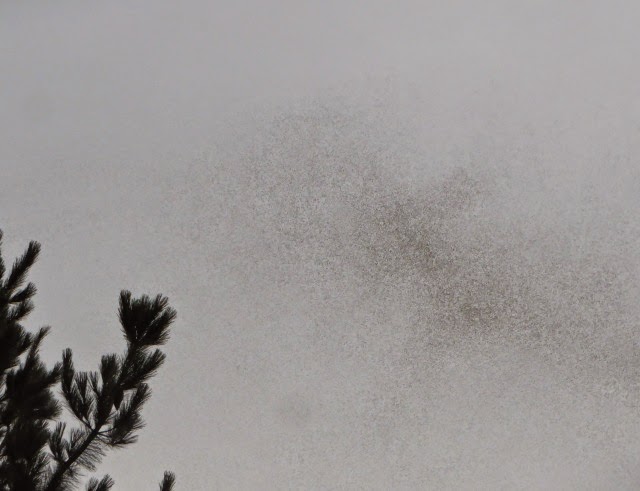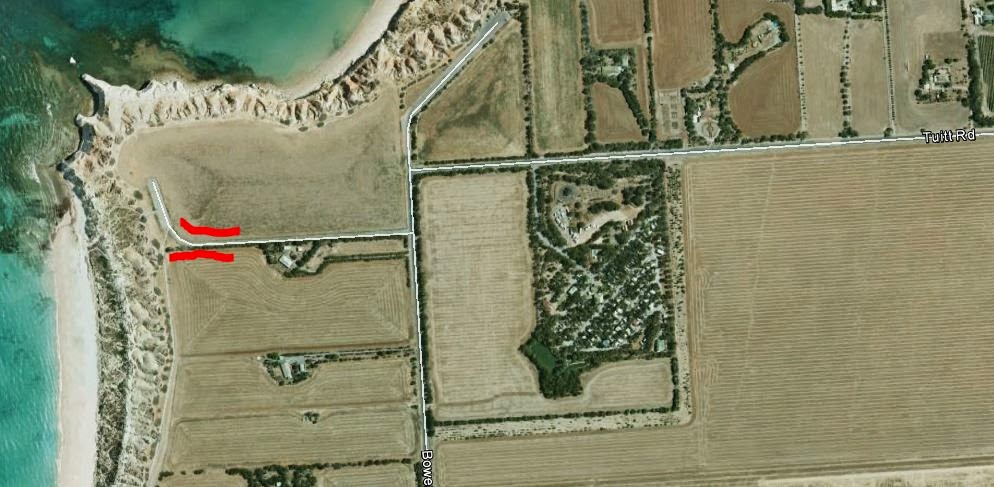ANPS in Tallaganda 13 July
The ANPS Wednesday Walkers took themselves off to a Southern part of Tallaganda National Park. We stopped twice on Wild Cattle Flat Rd to explore tracks running up into the bush.
Of course we were in the middle of Winter so matters were rather low-key both as regards birds and flowers.
At the first stop I thought we were going to be in the interesting situation of walking for about an hour and not recording a single bird. Things did pick up on that a bit and I ended with 5 species recorded. This included hearing a distant Superb Lyrebird calling briefly.
In terms of plants at this stop I was most impresed with the size of some of the Eucalyptus sieberii (Silvertop Ash) and the burls around their bases.
The second stop kicked off well for birds with a Wedge-tailed Eagle soaring overhead and a mixed feeding flock of at least 50 birds of at least 5 species passing by as we ate lunch. The birding highlight came at the highpoint of this walk when another Lyrebird gave a beautiful display song (surprisingly, with no mimicry).
There was very little photographic action (that appealed to me) with the angiosperms. Only one plant Bossiaea foliosa had been bold enough to stick forth flowers
so I took some photos of the buds on a few other species. The first is Monotoca scoparia.
Next up are a couple of fungi. The first was arranged (by Ma Nature) very artistically on the end of a log.
I believe this to be Ryvardenia campyla. The second fungal species was as weird as all get out, since it was a series of bright red stalks poking out of the ground (through a litter layer) over an area of about 50cm square. I wasn't sure if it was a fungus (thanks Roger for the support for that view)
but have since identified it as Clavaria miniata (Flame fungus).
I also took some images of various manifestations of moss.
I'll conclude with a nice example of the theory about moss growing on one side of a tree
In the Northern hemisphere the theory is that moss always grows on the Northern side of a trunk since this is more sheltered from the direct heat of the sun and tends to be a slightly more humid microclimate. As would be expected, in this hemisphere it is the Southern side that is more fertile as shown here. NOTE for the unwary navigator: this is only an approximation and one would need to be in desperate straits indeed to rely on this for recovery from a major spatial dislocation!
Of course we were in the middle of Winter so matters were rather low-key both as regards birds and flowers.
At the first stop I thought we were going to be in the interesting situation of walking for about an hour and not recording a single bird. Things did pick up on that a bit and I ended with 5 species recorded. This included hearing a distant Superb Lyrebird calling briefly.
In terms of plants at this stop I was most impresed with the size of some of the Eucalyptus sieberii (Silvertop Ash) and the burls around their bases.
The second stop kicked off well for birds with a Wedge-tailed Eagle soaring overhead and a mixed feeding flock of at least 50 birds of at least 5 species passing by as we ate lunch. The birding highlight came at the highpoint of this walk when another Lyrebird gave a beautiful display song (surprisingly, with no mimicry).
There was very little photographic action (that appealed to me) with the angiosperms. Only one plant Bossiaea foliosa had been bold enough to stick forth flowers
so I took some photos of the buds on a few other species. The first is Monotoca scoparia.
Next up are a couple of fungi. The first was arranged (by Ma Nature) very artistically on the end of a log.
I believe this to be Ryvardenia campyla. The second fungal species was as weird as all get out, since it was a series of bright red stalks poking out of the ground (through a litter layer) over an area of about 50cm square. I wasn't sure if it was a fungus (thanks Roger for the support for that view)
but have since identified it as Clavaria miniata (Flame fungus).
I also took some images of various manifestations of moss.
I'll conclude with a nice example of the theory about moss growing on one side of a tree
In the Northern hemisphere the theory is that moss always grows on the Northern side of a trunk since this is more sheltered from the direct heat of the sun and tends to be a slightly more humid microclimate. As would be expected, in this hemisphere it is the Southern side that is more fertile as shown here. NOTE for the unwary navigator: this is only an approximation and one would need to be in desperate straits indeed to rely on this for recovery from a major spatial dislocation!














Comments